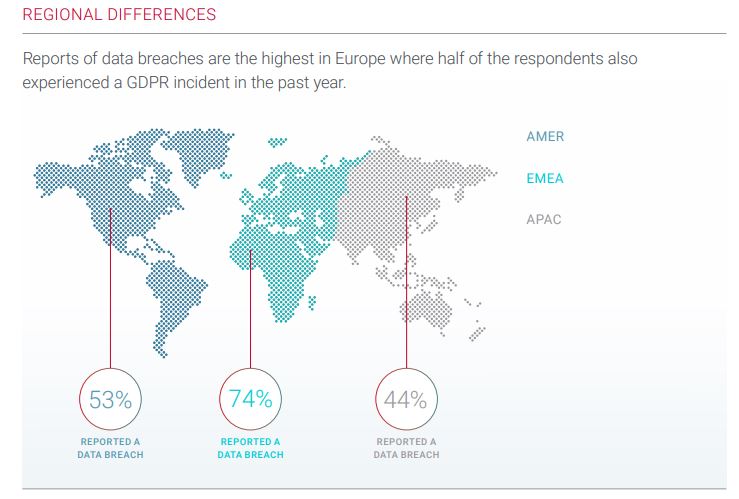Data breaches are expensive, and the costs are only going up.
Those reporting attacks that cost 10 million USD/EUR/GBP or more almost doubled from last year — from 7% in 2018 to 13% in 2019. Half of Radware's C-Suite Perspectives survey respondents estimated that an attack cost somewhere between 500,001 and 9.9 million USD/EUR/GBP.

One Year In
Arguably, the General Data Protection Regulation (GDPR), which has been active in the European Union since May 2018, contributes to these rising costs.
Every EU state has a data protection authority (DPA) that is authorized to impose administrative fines for improper handling of data. Fines can go up to 4% of a company’s worldwide revenues for more serious violations. Article 83 of the GDPR requires that fines be “effective, proportionate and dissuasive.”
More than half of Radware's 2019 C-Suite Perspective survey respondents from EMEA experienced a self-reported incident under the GDPR in the past 12 months.
In the largest fine to date, France levied a fine against Google for €50 million for lack of consent on advertisements. Germany fined Knuddels €20,000 for insufficiently securing user data, enabling hackers to steal user passwords. And a sports betting café in Austria received a €5,000 fine for unlawful video surveillance.
 C-Suite Perspectives: From Defense to Offense — Executives Turn Information Security Into a Competitive Advantage
C-Suite Perspectives: From Defense to Offense — Executives Turn Information Security Into a Competitive Advantage
So far, DPAs have received almost 150,000 complaints about data handling. Most are about video surveillance and advertising calls or mailings, according to the EU Commission. While fines have not yet been imposed in many cases, the potential for significant penalties is there.
The takeaway? C-suite executives in all regions should not let the leniency of the first year of GDPR enforcement lull them into complacency. The threat of GDPR fines is just one risk facing organizations that experience a data breach.
The danger is very real.

Read “2019 C-Suite Perspectives: From Defense to Offense, Executives Turn Information Security into a Competitive Advantage” to learn more.
Download Now